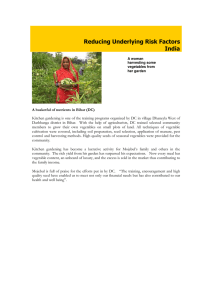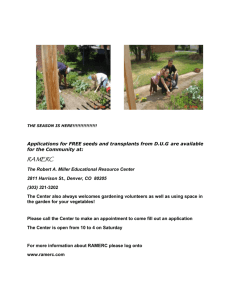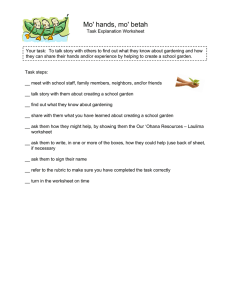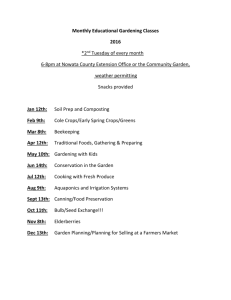Good for You! Gardening Means Delicious Eats!
advertisement
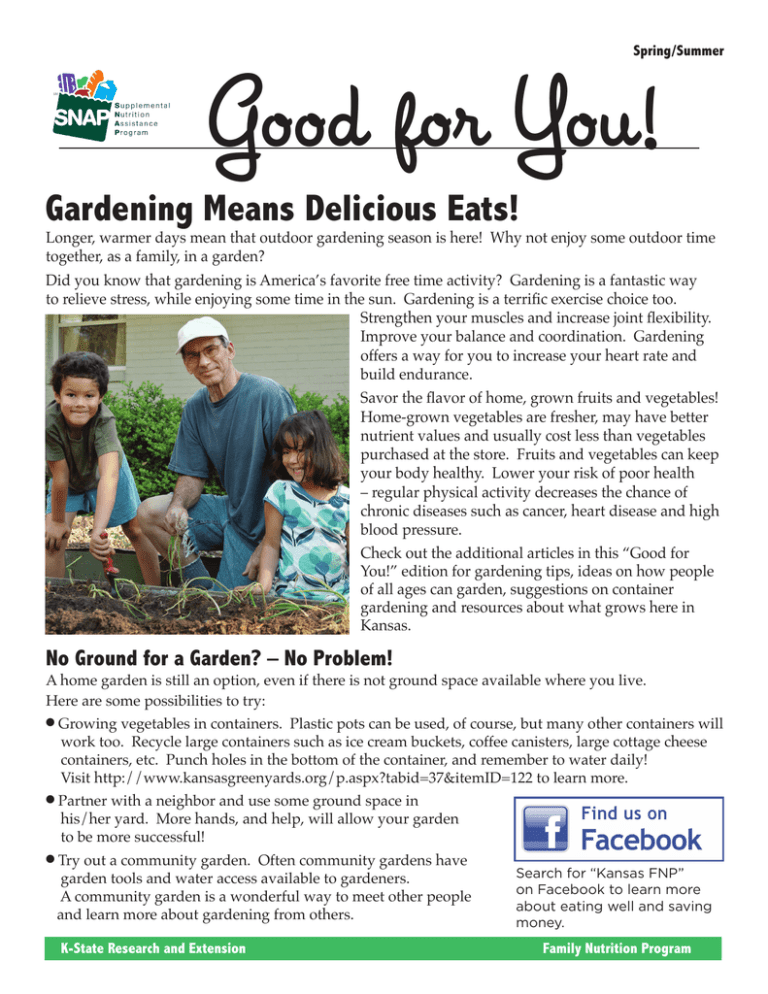
Spring/Summer Good for You! Gardening Means Delicious Eats! Longer, warmer days mean that outdoor gardening season is here! Why not enjoy some outdoor time together, as a family, in a garden? Did you know that gardening is America’s favorite free time activity? Gardening is a fantastic way to relieve stress, while enjoying some time in the sun. Gardening is a terrific exercise choice too. Strengthen your muscles and increase joint flexibility. Improve your balance and coordination. Gardening offers a way for you to increase your heart rate and build endurance. Savor the flavor of home, grown fruits and vegetables! Home-grown vegetables are fresher, may have better nutrient values and usually cost less than vegetables purchased at the store. Fruits and vegetables can keep your body healthy. Lower your risk of poor health – regular physical activity decreases the chance of chronic diseases such as cancer, heart disease and high blood pressure. Check out the additional articles in this “Good for You!” edition for gardening tips, ideas on how people of all ages can garden, suggestions on container gardening and resources about what grows here in Kansas. No Ground for a Garden? – No Problem! A home garden is still an option, even if there is not ground space available where you live. Here are some possibilities to try: l l l Growing vegetables in containers. Plastic pots can be used, of course, but many other containers will work too. Recycle large containers such as ice cream buckets, coffee canisters, large cottage cheese containers, etc. Punch holes in the bottom of the container, and remember to water daily! Visit http://www.kansasgreenyards.org/p.aspx?tabid=37&itemID=122 to learn more. Partner with a neighbor and use some ground space in his/her yard. More hands, and help, will allow your garden to be more successful! Try out a community garden. Often community gardens have garden tools and water access available to gardeners. A community garden is a wonderful way to meet other people and learn more about gardening from others. Search for “Kansas FNP” on Facebook to learn more about eating well and saving money. K-State Research and ExtensionFamily Nutrition Program What to Grow? Did you know it is possible to grow fruits and vegetables from March through October, in Kansas? It is true! A number of veggies can be planted in March for a May/June harvest. These are “cool season” crops, because they grow when the soil and air temperatures are generally cooler. “Warm season” crops grow better during the months of July and August. Make a plan for the vegetables and fruits that you would like to grow. Consult the seed package to determine when and how to plant. Contact your local Extension office to learn more! Experiment with different varieties to determine which you like best, and which grow best in your garden. If you are using containers, check the seed package or plants for special container varieties. A number of easy-togrow favorites are available in container-friendly varieties! Label plants to keep track of what varieties you have tried. If tomatoes are a favorite, consider planting a couple of plants in early May, and plant several later in May to enjoy a longer harvest season. Other cool season crops may grow well early in the season, then as a second planting later as summer moves toward fall. Tips to Make Your Home Garden a Success l l l l l l l Remember to water consistently, and get ready to enjoy some seasonal successes! Fruits and vegetables provide fiber and a variety of vitamins and minerals. Most are naturally low in calories and fat, and high in satisfaction – they provide flavor and bulk to our meals and snacks. Eating fruits and vegetables may help people live longer, because antioxidants contribute to slowing down the aging process. Fruits and vegetables may also help protect mental capacity in older adults. Enjoy antioxidants in colorful fruits and vegetables like raisins, blueberries, spinach, beets, oranges, red bell peppers, onions, corn and peas! l Select a location. Choose a size that’s right for you and your family. Clear debris such as rocks, foreign objects and dead plant material. Gather needed tools such as shovels, rakes, gloves, etc. Store tools in a nearby, dry location, such as a plastic box. Determine what to plant and when to plant. Water regularly, and watch for weeds and pests. Invite all family members to have a role. This material is funded by USDA SNAP. USDA is an equal opportunity employer and provider. SNAP provides food assistance to people with low income. It can help you buy nutritious foods for a better diet. For information, call 1-888-369-4777. For more information, contact your local Extension Office
